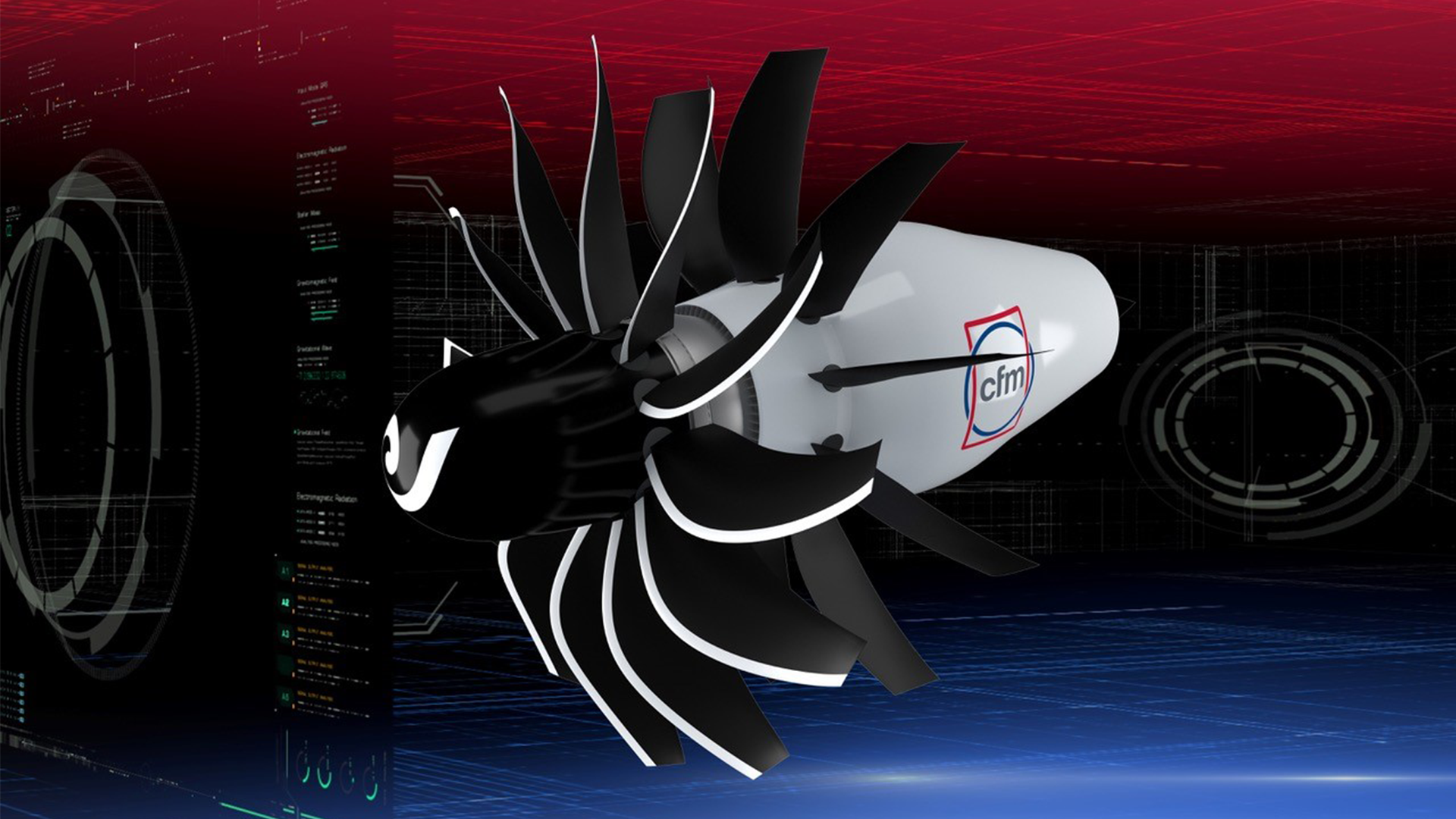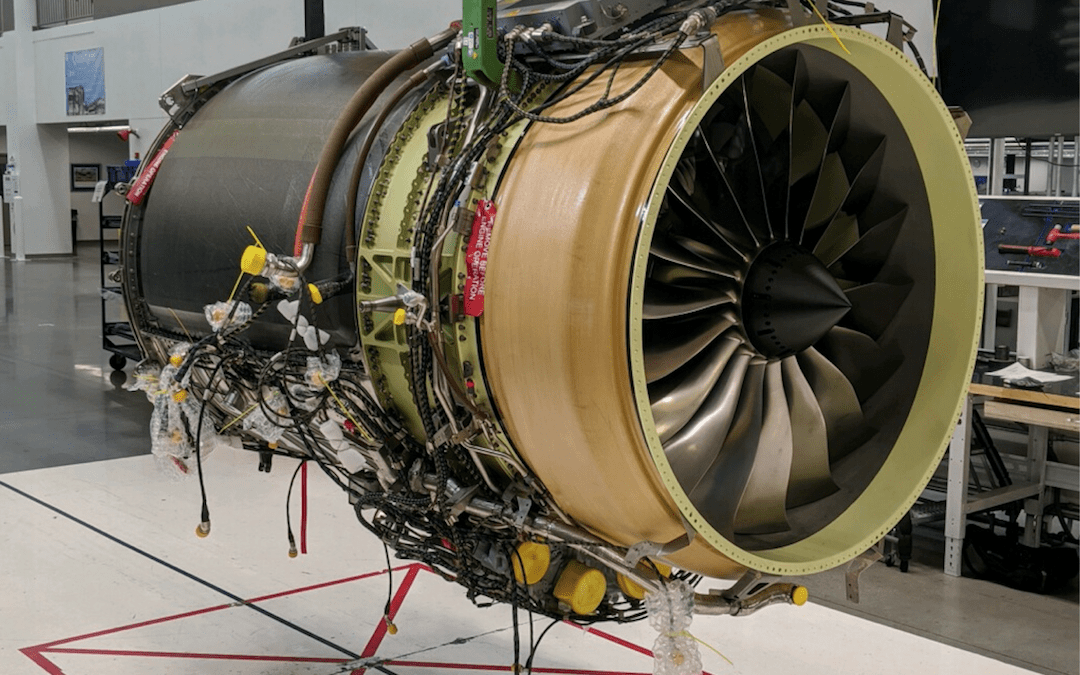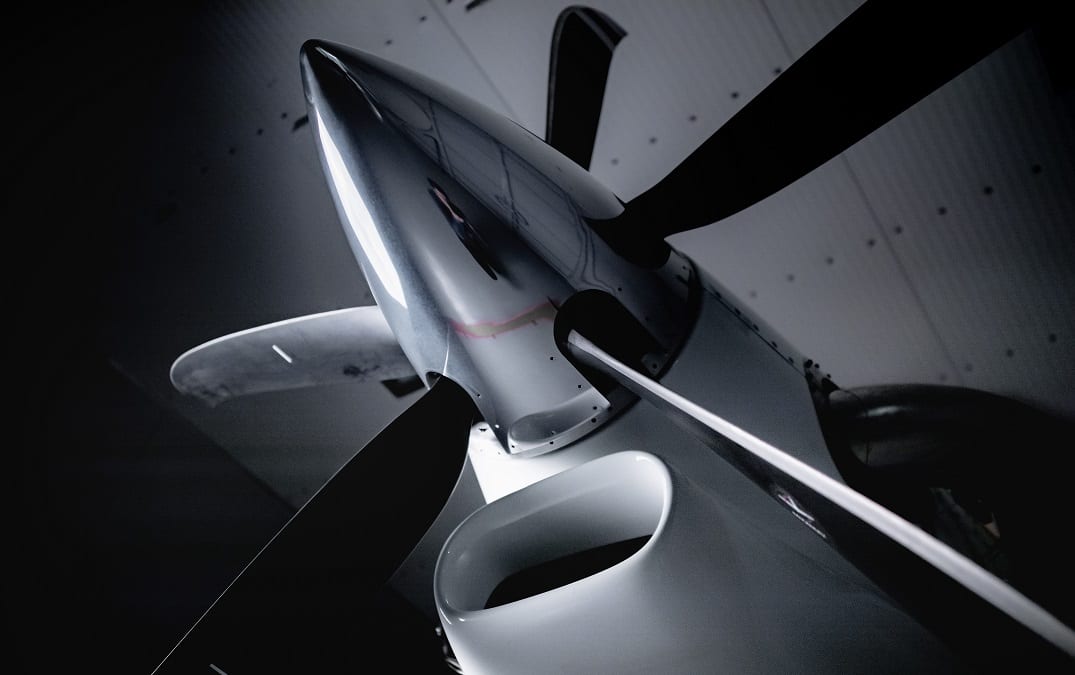Ain't No Stopping Us Now: CFM's RISE Program Gaining Momentum
April 22, 2024 | by Dianna Delling
“We are at a stage of the program in which we’re doing real testing on real hardware and making real progress.”
Mohamed Ali, vice president and general manager of engineering for GE Aerospace, was speaking about the CFM Revolutionary Innovation for Sustainable Engines (RISE) program at GE Investor Day in New York last month. And his words describe the venture’s current phase precisely. As the RISE program’s game-changing technologies evolve from promising design concepts to functioning components and systems, the pace of testing is accelerating.
“It’s full speed ahead for the RISE program in 2024,” says Arjan Hegeman, general manager of advanced technology for GE Aerospace. “It’s a period of innovation unlike anything GE Aerospace has seen before.”
Unveiled in 2021 by CFM International, a 50/50 joint company between GE Aerospace and Safran Aircraft Engines, the RISE program is advancing technologies to support flight that aims to be 20% more fuel efficient with 20% lower carbon emissions than current commercial engines. It’s a formidable challenge, and one that’s critical to meeting the aviation industry’s long-term climate goal of net zero carbon emissions by 2050 for commercial flight. More than 100 tests have been completed so far.
Case in point: tests on the program’s next-generation high-pressure turbine, which were recently conducted in a demonstrator engine at GE Aerospace headquarters in Evendale, Ohio, confirmed that it can deliver significant fuel efficiency improvement and increased durability. “It demonstrated a generational step-change improvement in our turbine component cooling technology,” Hegeman says. The technology will be useful in the compact core GE Aerospace is developing for the RISE program through NASA’s Hybrid Thermally Efficient Core (HyTEC) program, which has so far focused on high-pressure compressor and high-pressure turbine advanced aerodynamics, along with work on the combustor.
GE Aerospace is also working with NASA and Boeing on the U.S. space agency’s Electrified Powertrain Flight Demonstration (EPFD) program, which seeks to prove the feasibility of hybrid electric flight for commercial aircraft. In 2022, working with NASA, the company was the first to test a multi-kilovolt, megawatt-class hybrid electric power system in conditions simulating altitudes up to 45,000 feet. Hybrid electric systems continue to be tested this year at GE Aerospace’s EPISCenter facility at the University of Dayton.

RISE program technologies are being developed for compatibility with alternative energy sources as well. To date, GE Aerospace and its joint ventures have tested 10 different aircraft engine models using 100% sustainable aviation fuel (SAF) to evaluate engine performance, as well as the impact of 100% SAF on contrails and emissions.
Meanwhile, testing of the RISE program’s much-anticipated open fan engine architecture continues. In Modane, France, in January, Safran Aircraft Engines and the country’s aerospace research center ONERA (Office National d’Études et de Recherches Aérospatiales) began wind-tunnel tests of a one-fifth-scale replica of the unducted engine prototype. Speaking to journalists in February before the Singapore Air Show, Pierre Cottenceau, Safran’s vice president of engineering, research, and technology, said around two-thirds of the first 200 hours of aerodynamics and acoustics testing has been completed. “Generally, we are very happy with the results,” he added.
The wind-tunnel tests follow simulations completed in 2023 on the world’s fastest supercomputer. To simulate air movement of a full-scale open fan design with intricate detail, GE Aerospace created computational fluid dynamics software capable of running on Frontier, the supercomputer maintained at the U.S. Department of Energy’s Oak Ridge National Laboratory, which has the processing power of roughly 37,000 GPUs and can make more than a quintillion calculations per second.
Such sophisticated testing of the technologies at work in the RISE program will keep pace in 2024. Hegeman anticipates a year of steady growth. “With many more activities from the front to the back of the engine,” he says, “all advancing towards full ground and flight demonstrators, we are excited to share more updates as things progress.”
GE Aerospace is looking for talented, innovative engineers globally to help advance aerospace for future generations. Explore opportunities and apply online for engineering roles at invent.ge/engineering to see your ideas take flight.





